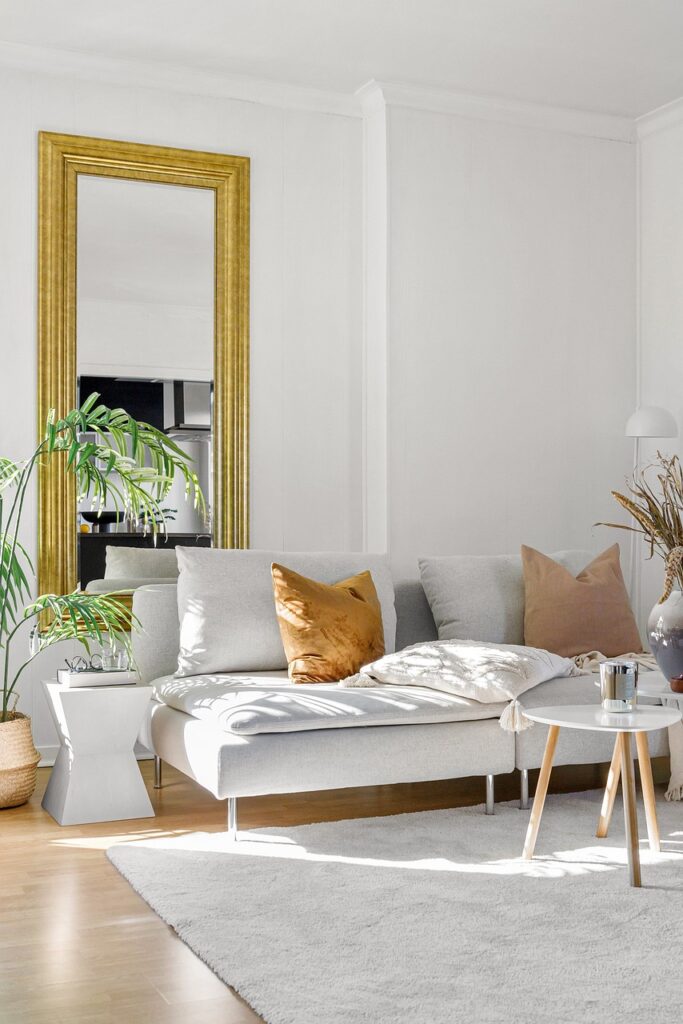In the realm of interior design, achieving a Korean-style aesthetic doesn’t have to break the bank. Transforming any space into a cozy haven with Korean vibes is not only possible but also surprisingly simple. Let’s explore an easy-to-follow, step-by-step guide that embraces affordable materials and furniture to bring the warmth and charm of Korean design to your home.
Step 1: Embrace Minimalism
Korean interior design is synonymous with minimalism. Begin by decluttering your space, opting for clean lines, and maintaining a simple color palette. The key is to create an open and tranquil atmosphere.

Step 2: Soft Pastel Palette
Korean interiors often feature soft pastel hues. Consider incorporating colors like muted pinks, blues, and greens for a calming effect. These tones will add a touch of serenity to your space.
Step 3: Natural Elements
Infuse natural elements into your design. Wooden furniture, bamboo, and indoor plants can seamlessly blend Korean aesthetics with nature, creating a harmonious balance.
Step 4: Floor Seating
Embrace the Korean tradition of floor seating. Invest in comfortable floor cushions or low-profile furniture to achieve a cozy and communal atmosphere.
Step 5: Paper Lanterns and Warm Lighting
Create a warm and inviting ambiance with soft, diffused lighting. Paper lanterns or warm-toned light fixtures will mimic the gentle glow often seen in Korean homes.
Step 6: Korean-Inspired Art and Décor
Incorporate Korean-inspired art pieces or decorations. Think about adding Hangul characters, traditional Korean motifs, or even framed Hangeul calligraphy for a touch of authenticity.
Step 7: DIY Korean Crafts
Get hands-on with DIY Korean crafts. Create your own norigae (traditional Korean ornaments) or Hanbok-inspired pillow covers to infuse personalized elements.
Now, let’s address some common questions:
Additional questions related to Korean style interior designing:
1. What is Korean interior design style?
Korean interior design is characterized by a harmonious blend of traditional influences and modern aesthetics, creating spaces that exude elegance, simplicity, and functionality. Fundamental aspects include the use of natural materials, a preference for neutral color palettes with subtle accents, and a focus on creating balance and symmetry within the space. Notably, Korean design often integrates elements of nature, such as wood and stone, to establish a connection between the indoor environment and the external world
The design style also embraces a minimalist approach, emphasizing clean lines, uncluttered spaces, and a sense of openness. Traditional Korean furniture, known for its simplicity and functionality, may be incorporated alongside contemporary pieces to create a seamless fusion of the old and the new. Additionally, floor seating, a characteristic feature of Korean design, fosters a sense of closeness and connection with the living space.
In essence, Korean interior design seeks to evoke a sense of tranquility and balance, drawing inspiration from nature, tradition, and modern innovation to create inviting and timeless living environments.
2. How to decorate a room in Korean style?
Decorating a room in Korean style involves carefully curated elements to capture the essence of Korean design. Here’s a detailed guide:
- Color Palette: Opt for a neutral color scheme with soft tones like beige, white, and light gray. These colors create a serene backdrop reminiscent of traditional Korean aesthetics.
- Natural Materials: Incorporate natural materials such as wood and stone. Wooden furniture, flooring, and decor items bring warmth and authenticity to the space.
- Minimalist Furniture: Choose minimalist furniture with clean lines. Low-profile seating, floor cushions, and simple wooden tables are characteristic of Korean design.
- Paper Screens: Integrate traditional Korean folding screens or “Hanji” paper screens. These not only add visual interest but also allow for flexible room division.
- Cultural Artifacts: Display traditional Korean artifacts like pottery, ceramics, or framed calligraphy. These items contribute to the cultural richness of the space.
- Floor Seating: Embrace the concept of “Ondol,” a Korean underfloor heating system. Arrange floor cushions or mats for comfortable seating closer to the ground.
- Nature-Inspired Decor: Use decor inspired by nature, such as floral motifs or artwork depicting landscapes. This aligns with the Korean appreciation for the beauty of the natural world.
- Soft Lighting: Implement soft and indirect lighting. Paper lanterns or pendant lights with warm hues create a cozy atmosphere, enhancing the overall ambiance.
- Subtle Accents: Add subtle accents like silk cushions or throws with delicate patterns. These bring a touch of luxury while maintaining the overall simplicity.
- Decluttered Spaces: Keep the space clutter-free. Korean design values open spaces, so avoid excessive ornamentation and only display items with significant meaning.
By carefully combining these elements, you can transform any room into a Korean-inspired haven that reflects the beauty and tranquility of traditional Korean design.

